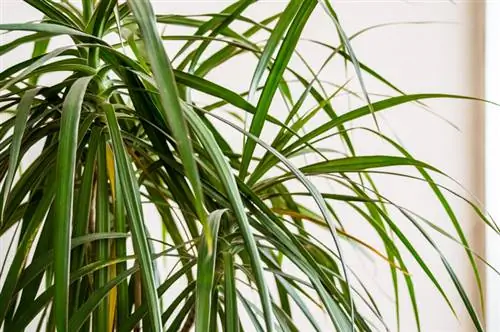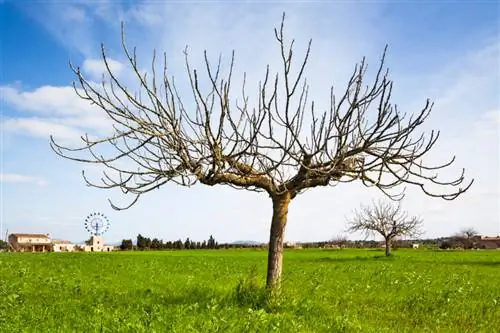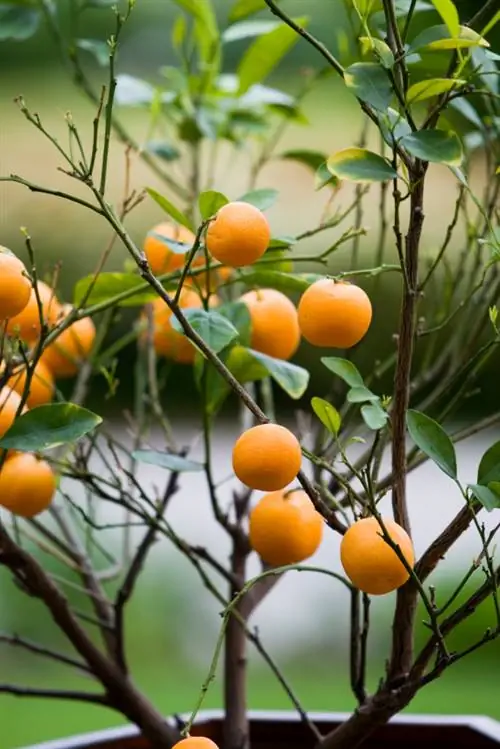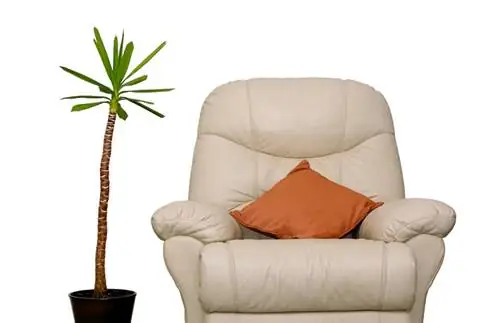- Author admin [email protected].
- Public 2023-12-16 16:46.
- Last modified 2025-01-23 11:21.
With its trunk-like base and leaf crown, the dragon tree is visually reminiscent of the appearance of many types of palm trees. It is therefore relatively unpleasant when the leaves fall off and only the grey-brown trunk remains.
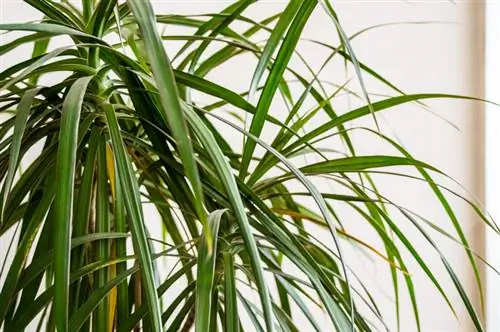
Why is my dragon tree losing leaves?
A dragon tree loses leaves due to normal growth processes, strong sunlight, temperature fluctuations or root and trunk rot. To avoid leaf loss, the plant should be gradually acclimated to the sun, constant temperatures ensured and watering should be sparing.
Some leaf fall is normal
Similar to palm trees, the trunk of the dragon tree is formed by new leaves emerging at the top of the plant and leaves dying at the bottom. So don't worry too much if leaves occasionally turn yellow at the bottom of the leaf crown and initially hang limply and later fall off completely. This is part of the dragon tree's natural growth process and the leaves can simply be disposed of as soon as they fall off.
Beware of sunburn
The situation, on the other hand, is more dramatic when a lot of leaves suddenly turn yellow or develop large brown spots. You should then consider whether you may have moved the dragon tree to a location that was too sunny. Many plant lovers want to do something good for their houseplants in summer and put them on the balcony. In certain cases this may even be possible, but a dragon tree should only be gradually accustomed to the weather conditions outside and to the stronger sunlight.
Avoid strong temperature fluctuations
Dragon trees grow naturally in places with relatively small temperature fluctuations. Accordingly, they should be set up in the house so that the temperature is relatively constant all year round. Many locations directly above a radiator and close to the window are rather unsuitable for the dragon tree, as it can then lose its leaves due to the dry heating air and the temperature fluctuations caused by the sun. If you absolutely want to place a dragon tree directly next to a bright window, then you should at least choose a specimen with patterned or rather reddish leaves. The less green a dragon tree species has in its leaves, the more sun it can tolerate. This has to do with the chlorophyll content of the leaves.
Notice stem rot in good time
If the leaves start to fall off from the tip, you need to hurry. Then the upper end of the trunk has often already rotted due to illness or as a result of care errors. Stem rot is usually accompanied by an unpleasant fishy smell. If the upper end of the trunk is affected by rot, radical pruning may help. If there is root rot, you can try to get the plant to start over as a cutting.
Tip
The most common reason for massive leaf loss in the dragon tree, in addition to the classic sunburn, is root and trunk rot. This can be prevented by watering sparingly, using a suitable substrate or using hydroponic care.

